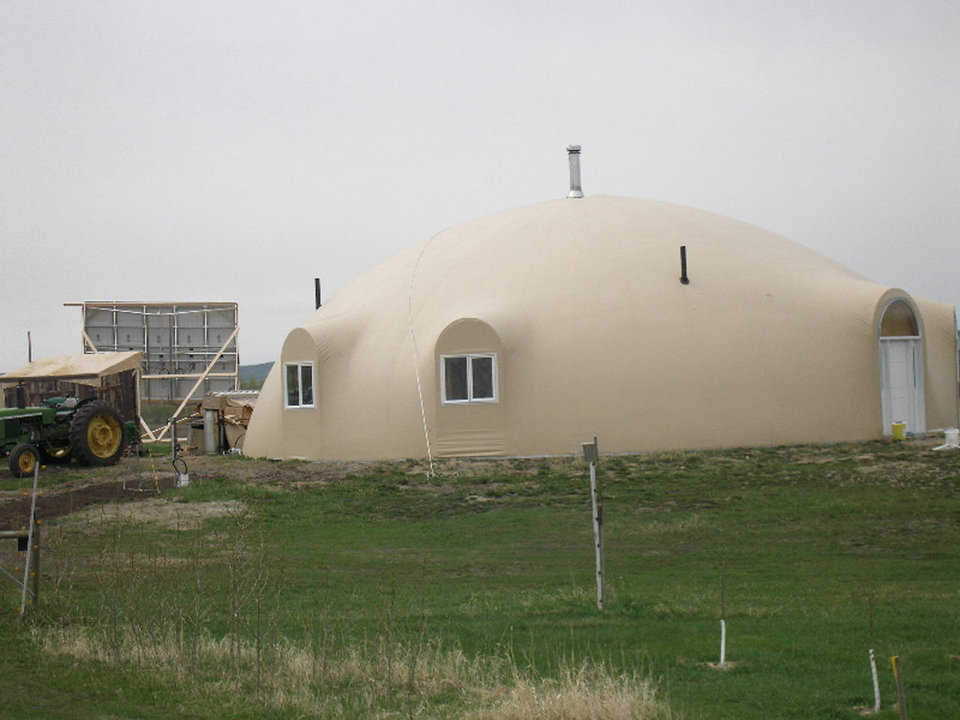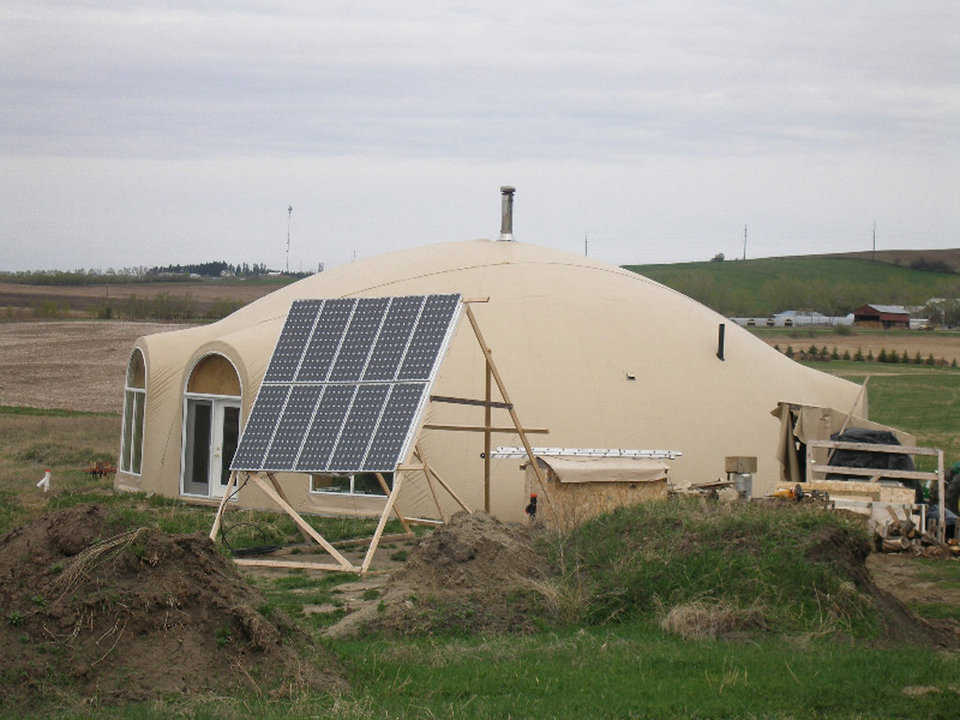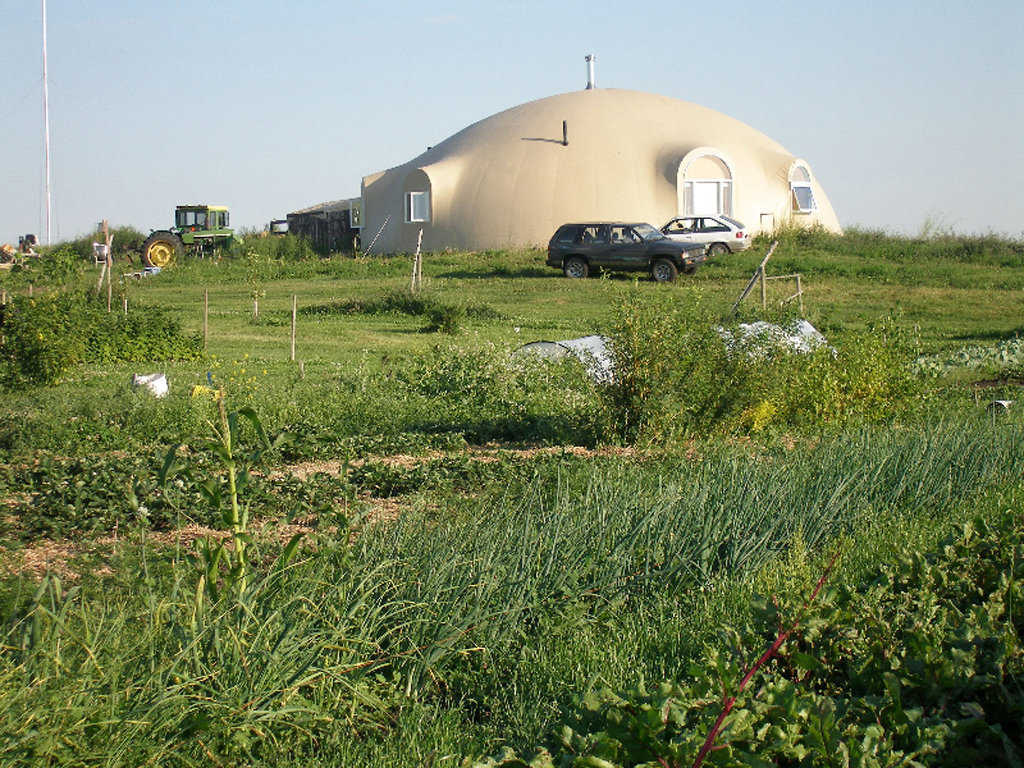A Monolithic Dome home in Canada
This 55-foot diameter Monolithic Dome is owned by Lynn Cain and Mike Forsyth. It was designed by Mike Forsyth and built by Canadian Dome Industries in the fall of 2005. Mike and Lynn are finishing the inside construction themselves.
Passive Solar
This dome incorporates the concepts of a passive solar house with a Monolithic Dome.
Passive Solar House is a book written by James Kachadorian, who lists four main concepts for a passive solar house: Lots of windows facing south, a passive solar floor, good insulation and thermal shutters.
A passive solar floor consists of cinder blocks laid on their sides with their cavities lined up, and the blocks laid in a north-south direction.
A concrete floor is poured over the cinder blocks, and vents are installed at the dome’s north and south ends.
Concept: Sun shines through the south-facing windows, heats up the floor and the concrete blocks, and the warm air naturally circulates through the blocks and the dome, thus heating the dome.
Mike’s Design
Mike’s design has three very large windows facing south. It seemed like a good combination since a Monolithic Dome already has good insulation.
Then too, this dome has seven doors/windows. Mike has built thermal shutters for each. They are closed at night during the winter to keep the warmth in and the cold out. And they are closed during the heat of the day in the summer to keep the heat out.
The dome is located on 80 acres, a mile off the Red Deer River in a valley — a perfect location for a wind powered generator!
They get their electricity from a combination of wind and solar; there are also eight 185 W solar panels. Inside the dome, a bank of batteries stores the electricity.
Since they are not connected to the grid, at times they produce more electricity than they need to fill the batteries. So, Mike added an electric, 60-gallon, hot water tank that automatically gets heated when there is extra electricity.
Water and Cooking
Mike and Lynn get their water from one of two wells on the property. Currently, a wood burning stove supplements the solar heat on cold days, but the wood burning stove will soon be replaced by a wood/coal burning boiler. It will run the in-floor heating on really cold days and provide domestic hot water.
The couple uses propane for cooking and for running an instant on hot water heater that is used only when there is no hot water from the electric hot water heater.
Interior
The dome encompasses two bedrooms, two baths, a large kitchen, pantry/laundry, and a large open section that will become the dining/living area and office. A second floor loft will be finished as an area for “projects.”
Mike and Lynn have a large organic garden and a greenhouse, where they grow much of their own food. Having an energy-efficient, sustainable house was a vital part of their overall plan for self-sufficient living.
Note: This article was first published in November 2007.

Interior design — This dome encompasses 2 bedrooms, 2 baths, a large kitchen, pantry/laundry, an open dining/living area and an office

A Passive Solar house — Sun shines through south-facing windows, heats the floor and the concrete blocks, and the warm air naturally circulates through the blocks and the dome, thus heating the dome.
